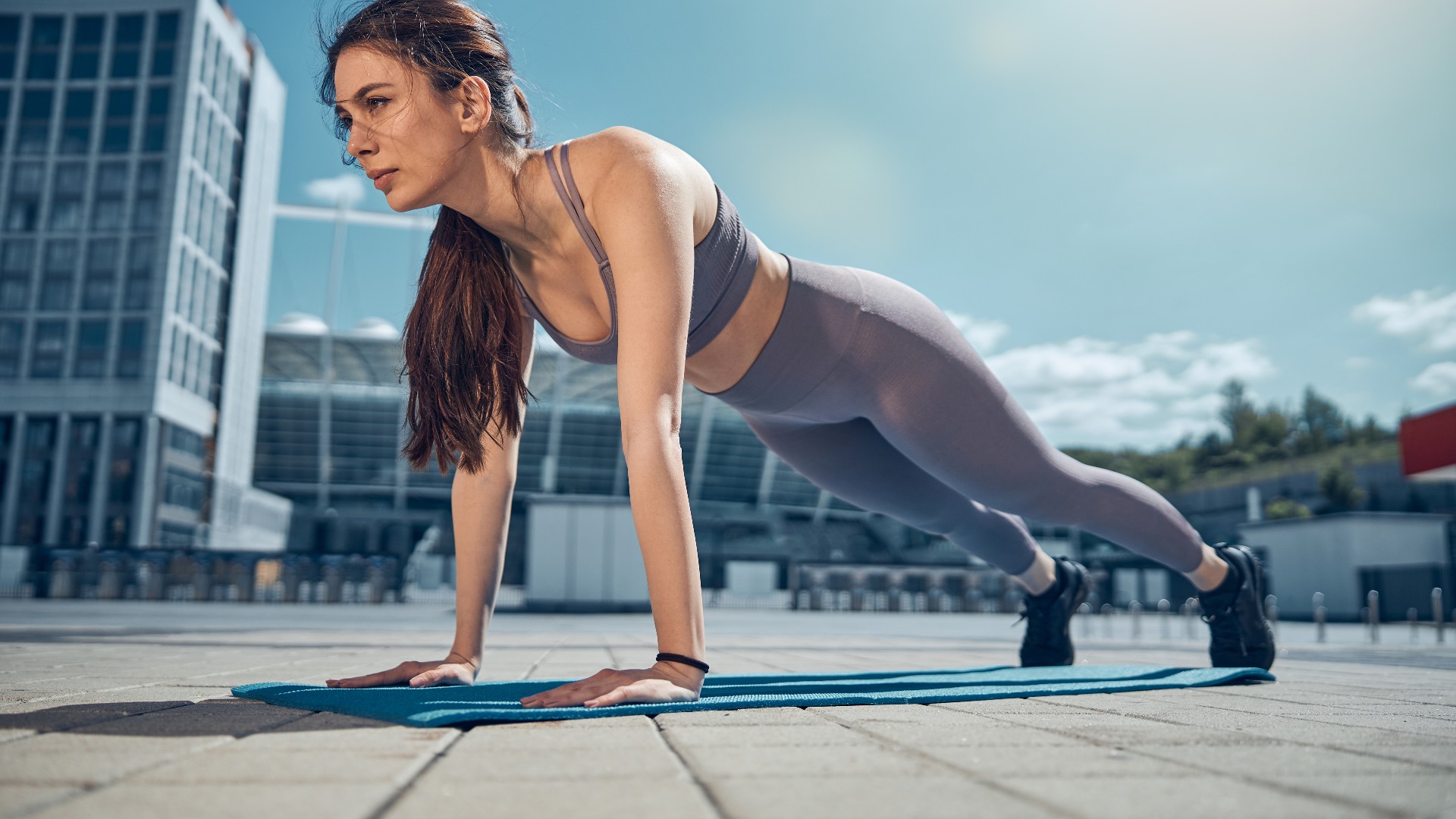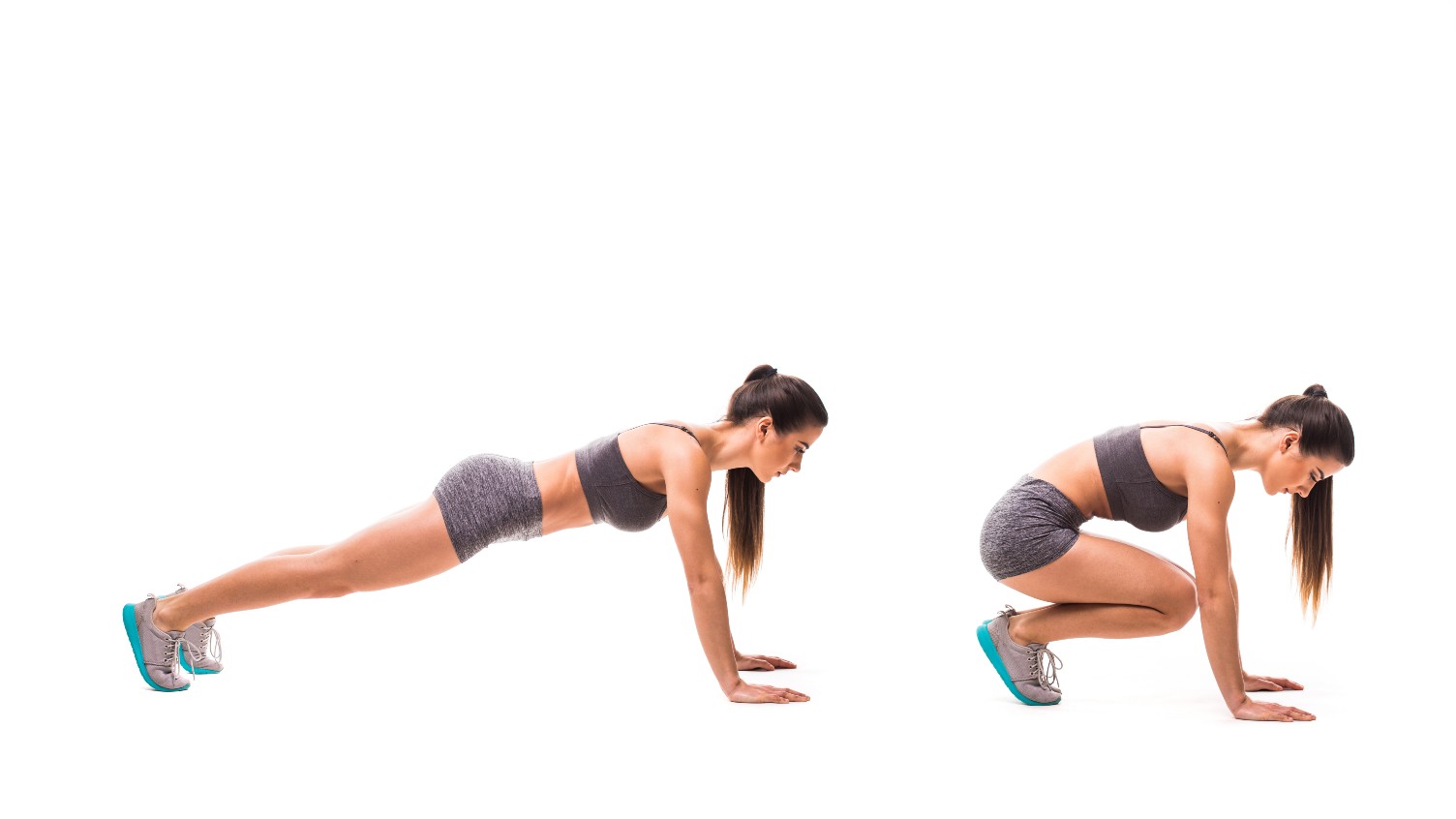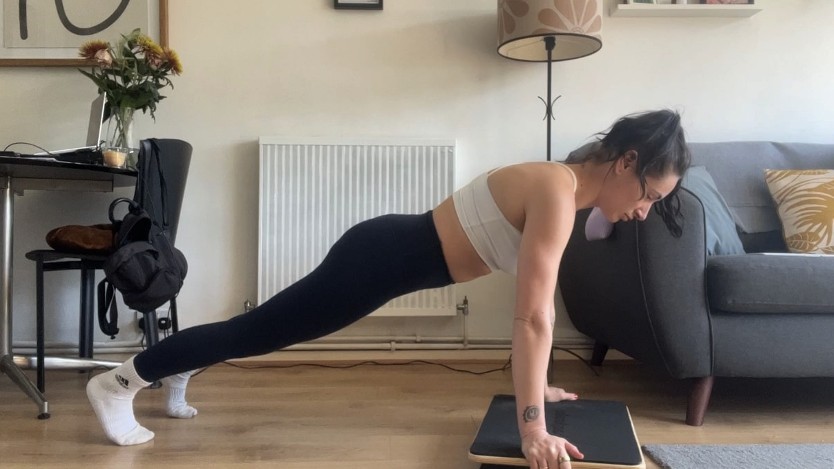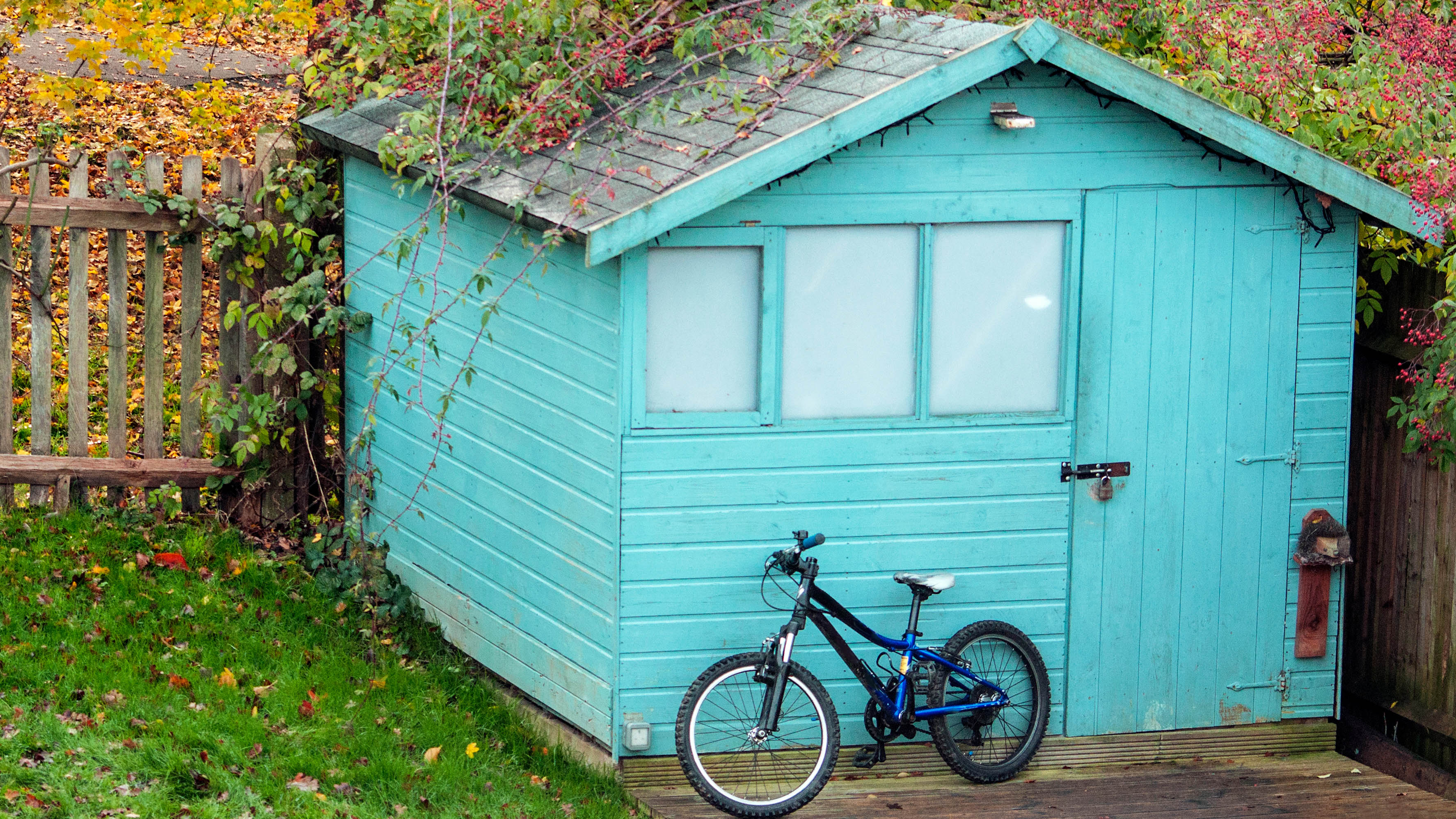
However you approach plank tucks, they're a killer full-body exercise that will test your muscles. I added to our ever-growing plank challenge bank at Tom’s Guide and did 70 reps every day for one week.
If plank tucks haven’t entered your workout regime before, the exercise works your shoulders, arms, core muscles, hip flexors, lower back and legs. In fact, there aren't many muscles the exercise doesn't hit. To do plank tucks, you’ll start in a plank position, jump both legs between your hands, then jump back again. But several variations fire up your core even more.
Along with some of the best plank variations we’ve tried, this one torched my muscles and ramped up my heart rate. If you plan to try them and haven’t before, I recommend speaking with a personal trainer to check your form. Here’s what happened when I hammered out nearly 500 reps — and ouch.
How to do plank tucks

There are other ways to try this, but the below method is arguably the most well-known plank tuck.
- Start in a straight-arm plank position with shoulders stacked over your wrists
- Engage your ab muscles, then bend your knees and begin to lean forward
- Jump both feet between your hands, lifting your hips as you move
- Keep your weight in the balls of your feet, then jump both feet back into your starting position.
As mentioned, your core muscles are the primary focus. The move hits your rectus abdominis, transverse abdominis (deeper core muscles) and internal and external obliques. But that's not all. You’ll also target your shoulders, arms, lower back, hip flexors and leg muscles.
I did 70 plank tucks every day for a week — here are my results
Well, doing a plank every morning for a week surprised our fitness editor, so what would 70 plank tucks a day do? I decided to find out.
Day 1
Plank tucks can form part of cardio training as jumping raises your heart rate. I felt puffed after 70 reps on day one, and my abs, hips and quads were firing on all cylinders. It’s similar to plank jacks but without lateral leg engagement.
Get instant access to breaking news, the hottest reviews, great deals and helpful tips.
More than anything, I’ve got a limited range of motion during this exercise, and 70 reps took forever. Tall people (I’m 5”2, so I don’t qualify) and anyone with tight hip flexors or wrist pain might struggle with the jump forward on this one, but there are ways around it.
Days 2 and 3
For the next few days, I headed to the gym and hit the TRX — suspension trainers offer a brilliant plank tuck variation if you need one. Stepping your feet through the handles and lowering them to plank height allows you to drive your knees toward your elbows from an elevated position; this helped me crunch my abs and draw my naval in without feeling restricted by a low starting position.
Equally, you could elevate your arms with push-up bars instead — if you want to practice jumping. Balancing your feet on a stability ball is a popular option for torching your muscles and challenging coordination and core stability.
Days 4 and 5
By day four, it was time to mix it up again, as I had started to get bored. This time, I placed sliders underneath my feet and focused on driving my knees toward my elbows on the floor. To add further instability (which I instantly regretted), I then added a Plankpad underneath my shoulders (see the photo of when I started using a Plankpad every day below) and finished my reps with a wobble.

The friction creates a slight drag as you tuck your knees toward your hands, putting the lower body through the wringer. I found my shoulders more active using this method, and I practiced squeezing every muscle group to guide the sliders forward without dropping my hips or dipping into my lower back.
If you’re building a home gym full of the best home gym equipment, sliders are an affordable way to elevate various exercises like alligator crawls and moving bear planks. However, you could just as easily use a dishcloth or sweatshirt if you wanted.
Days 6 and 7
During the last few days, I decided to play around with time under tension (TUT), deliberately slowing down my movements to work my muscles harder for longer. I recommend only doing this if you need the extra engagement, but it helps me focus on expanding my breath and correcting form. If you struggle to control your breath, a 5-minute breathing exercise could help you bring awareness to it.
Verdict
My hips were feeling tight by the end of the week. I love any exercise that targets the hip flexor muscles, as they’re some of the most underused and weak muscles in the human body, along with the glutes.
I finished up my last day with this one move to reduce hip flexor pain — it’s my favorite lower back and hip stretch and the most underrated exercise in my books. But you should add mobility and stretching regularly to your exercise routine (several times a week), not just when you feel tight.
We cover more Tom’s Guide-approved stretching exercises below.
More from Tom's Guide
- I did this crunch that targets your obliques & inner thighs for a week
- This Pilates for beginners workout torches your abs in 20 minutes
- These 4 stretches boost flexibility and build strength

Sam Hopes is a level 3 qualified trainer, a level 2 Reiki practitioner and fitness editor at Tom's Guide. She is also currently undertaking her Yoga For Athletes training course.
Sam has written for various fitness brands and websites over the years and has experience across brands at Future, such as Live Science, Fit&Well, Coach, and T3.
Having coached at fitness studios like F45 and Virgin Active and personal trained, Sam now primarily teaches outdoor bootcamps, bodyweight, calisthenics and kettlebells.
She also coaches mobility and flexibility classes several times a week and believes that true strength comes from a holistic approach to training your body.
Sam has completed two mixed doubles Hyrox competitions in London and the Netherlands and finished her first doubles attempt in 1:11.
